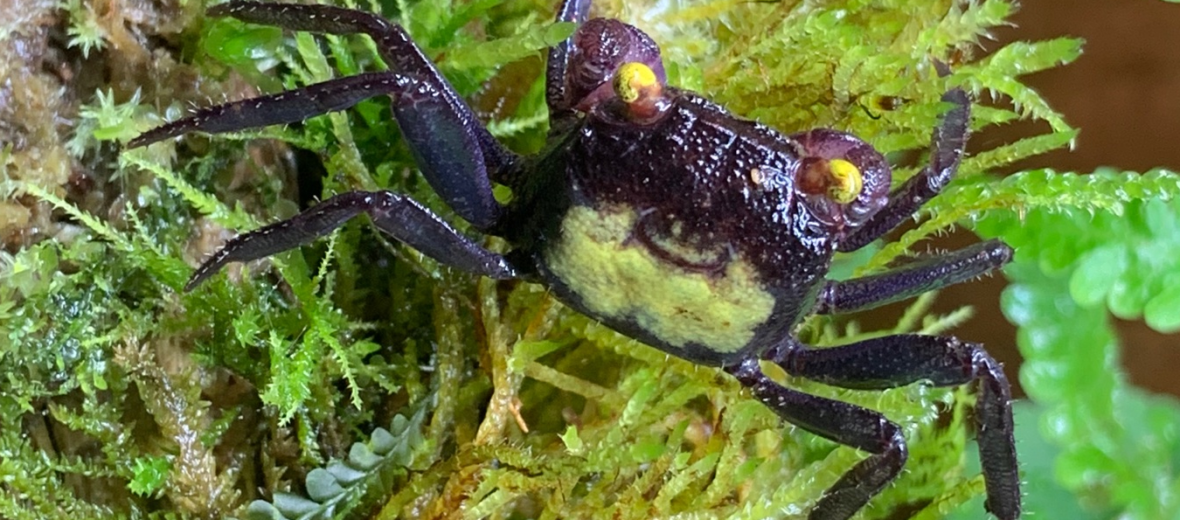
The vampire crab, aka Halloween crab, can be found in Asia, Java, Krakatau, Riau, Sulawesi, and the western Pacific. They prefer wet, rock-laden caves and moist tunnels near freshwater streams. Even though they aren’t currently evaluated by the IUCN, it is presumed that they are affected by pollution, habitat destruction, and over-collection for the pet trade.
First the Stats…
Scientific name: Geosesarma dennerle
Length: Up to 2 inches
Lifespan: Up to 2 years
Now on to the Facts!
1.) Vampire crabs are crepuscular (active at dawn and dusk).
2.) These crabs can remain motionless for hours at a time.
3.) They are solitary and aggressive towards other crab species.
4.) Like all crabs, they go through multiple molts as they age and grow.
5.) Discarded shells are typically consumed to regain calcium lost in the molting process.
But wait, there’s more on the vampire crab!
6.) Their diet consists of various invertebrates and plant matter, making them omnivores.
7.) During mating, the male will climb on top of the female and fertilize her eggs.
Did you know…?
These crabs don’t fully submerge themselves in water, like many other crab species. They prefer a highly humid environment with access to freshwater.
8.) Females carry up to 80 eggs with her for up to a month.
9.) The young crabs are hatched precocial (self sufficient), and look just like miniature adult crabs.
10.) If the young crabs don’t disperse, they will be eaten by the adults.
11.) Vampire crabs are a favorite of aquarium and terrarium enthusiasts. This has caused a drain on the wild populations.
Now a Short Vampire Crab Video!
Be sure to share & comment below! Also, check out the Critter Science YouTube channel. Videos added regularly!
Want to suggest a critter for me to write about? Let me know here.
Some source material acquired from: Wikipedia
Photo credit: AverageWalrus



